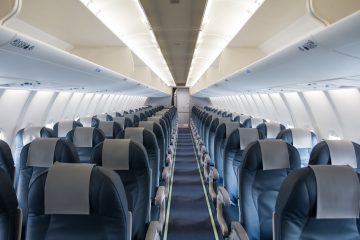Heading to college—or out into the “real world” on your own—can bring with it a lot of changes. From figuring out how to cook for yourself or how you’re supposed to file taxes to traveling without your family for (maybe) the first time, there’s a lot to know. We can’t help with your taxes (sorry), but we can give you our best travel tips and tell you pretty much everything you need to know as a first-time (or semi-first-time) traveler.
If you haven’t traveled much before, have never made your own travel plans, or are feeling unsure about any step of the travel process, let us help. Keep reading, we’ll fill you in on all the basic travel tips you should know.
Buying your tickets
Never bought a plane ticket before? We can help. Buying a plane ticket online is similar to buying other things online, so the process may feel familiar to you! Enter the route you want and the dates you want for your ticket, choose if you want those exact dates or if your dates are flexible, and then search! Our website will return a list of flights that match your search. You can adjust by airline, class, arrival time and more if you want. When you find a flight you like, add it to your cart and follow the prompts to purchase. You’ll have to fill in travel information for us and the airline before purchasing. (It’s easiest if you create an account on our website first!)

Student discounts exist. Get student discounts, find promo codes for flights and more, all on our website. We’ve got plenty more advice on how to find cheap flights as a student, too.
Know the fine print of your ticket. For example, is it non-refundable? Are carry-on bags included? Most flights are nonrefundable, so it’s best to know your plans before you buy so you’re not surprised if you have to change or cancel and hit unexpected fees. Any Basic Economy flight has additional restrictions you should be sure you understand before buying.
Start looking early. Unlike clothes or electronics, flight prices can vary pretty much constantly—from week to week or even day to day. When you see a good price, book it. Use our promo codes and sales for more savings. Read the fine print. Double check that the dates and times selected are the ones you want before you book.

If you’re booking for the holidays, book in advance. Since it’s such a popular time to travel (for students and non-students alike!) flight prices tend to get much more expensive once it gets closer to the holidays. The cheapest time to book for the holidays is sooner than you think!
FYI: buying flights isn’t like buying something from Amazon. If something goes wrong, you may not be able to get a refund. Trip insurance can help (we offer it as an add-on option while you’re checking out!) but it doesn’t cover everything. Check the fine print! If you need to cancel or change your flight, you’ll probably encounter fees.
If you can’t make your flight anymore, you won’t be penalized for not flying the itinerary without cancelling. You won’t get a refund, but you won’t hit cancellation fees either. Just know that if you don’t fly one leg of your itinerary, the airline will automatically cancel the rest of your itinerary.
As soon as you’ve booked your ticket, go to the airline’s website and log in with your reservation code. This way, you’ll be able to add the reservation to your account with the airline (if you have one), earn reward miles and sign up for text or email alerts in case the airline changes anything with your flight schedule.
Packing for your trip
Basic bag requirements. Disclaimer: These rules vary by airline and fare class, but these are generally standard. Each passenger can bring 1 small bag or personal item and one carry-on (backpack or small suitcase) on the plane with them. Each checked bag can usually be 50 lbs. max and typically costs extra, except on international flights. Always check baggage rules for your airline, route and fare class (i.e. basic economy, economy or business class) before you fly to know what you can bring.
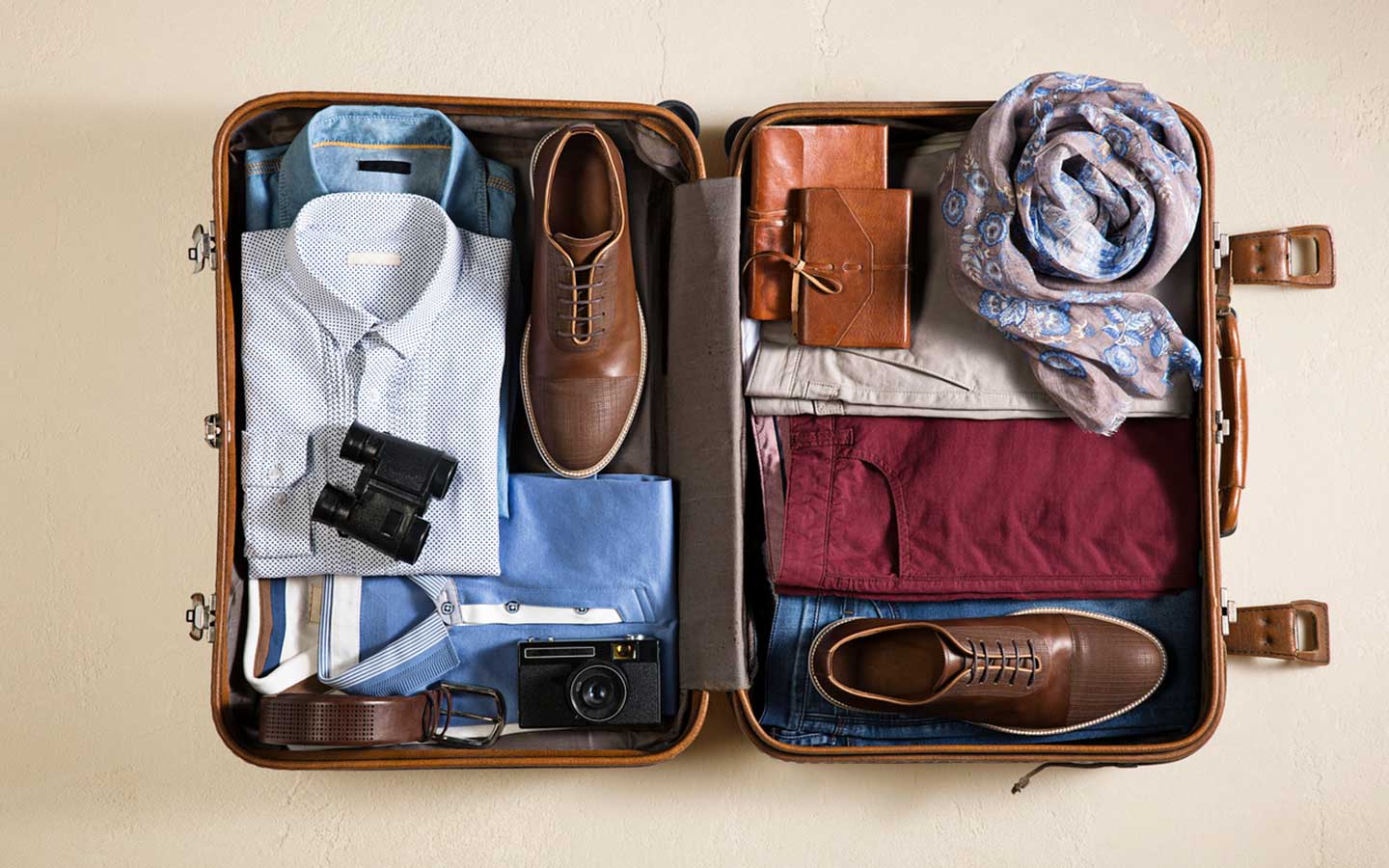
Keep essentials with you. Basic travel tip: pack anything essential in your carry-on, including at least one change of clothes and a few small basic toiletries, in case your checked bag gets delayed. Also, anything valuable that you would hate to lose should always be in your carry-on.
Carry-on rules. Airlines have specific rules about what can and can’t come on the plane with you. Some things are obvious (no knives or fireworks on the plane, please), other items less so. Not sure if something can come on the plane with your or not? Easy travel tip: check the TSA website for more details on what can be packed in carry-on luggage.
Packing liquids: put all your liquids in a quart-sized plastic bag for security. All liquids being carried onto the plane have to be under 3 oz. and fit inside a quart-sized plastic bag.
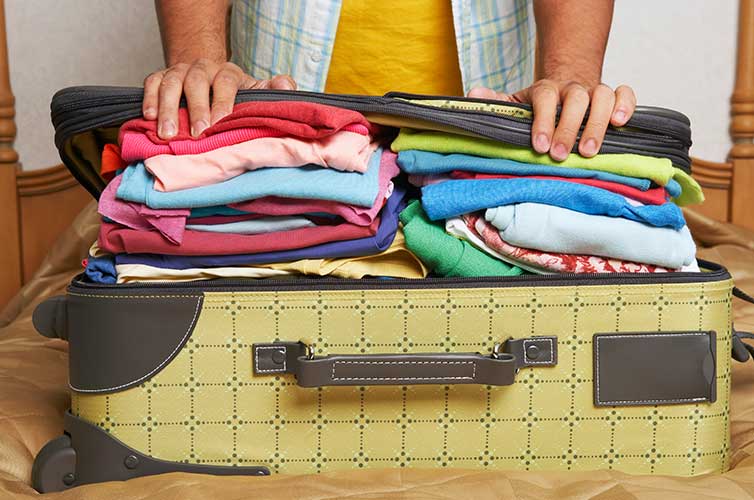
Things you can’t fly without: your boarding pass. An appropriate form of ID (official government ID for domestic, passport for international). Any required visas. If you forget these items, you’re not going to be able to board your plane.
Planning your trip
Visas and travel documents. Always, always, ALWAYS double-check visa requirements & your passport’s expiration date before you travel abroad, just in case. This includes transit visa requirements, i.e. a visa for traveling through a country during a layover.

Using your phone abroad. If you’re traveling abroad, using your phone normally may cost a LOT of money for international roaming data charges and fees. Figure out in advance how you want to set up your phone. Either get an international data plan, buy a SIM card local to your destination, or just use WiFi and keep your phone in airplane mode with WiFi on during your trip.
Check in for your flight in advance. Most airlines allow you to check in online up to 24-hours before your flight. Checking in online lets you tell the airline if you have bags to check in and pay any applicable fees. You can also select your seats (usually, depending on the flight and airline) and print your boarding pass (or download it to your phone).
Talk to your bank. If you’re traveling internationally, call your bank in advance and ask them to add a travel notice to your account. Let them know the dates you’ll be traveling and which countries you’ll be visiting. They’ll add a note to your account so purchases abroad aren’t tagged as fraud.
If you’re traveling internationally, don’t forget to think about currency exchange. Most major credit and debit cards will work in cities abroad, however, it doesn’t hurt to check with your bank. Also be sure you know what the international fees for your cards will be. If you need to exchange currency, you’ll be able to find currency exchange booths at train stations, banks and around major downtown areas. Of course, you can also just take out cash from an ATM with an American debit card.
At the airport
Nervous about finding your way through the airport? Don’t be! There are LOTS of signs in airports (and many international airports have English signs as well). Plus, you can always stop any airport employee and ask for help or directions. When you get to the airport, find the check-in gates that have signs matching the airline you’re flying. Drop off any checked baggage you have and print a boarding pass (if you don’t have one on your phone already).
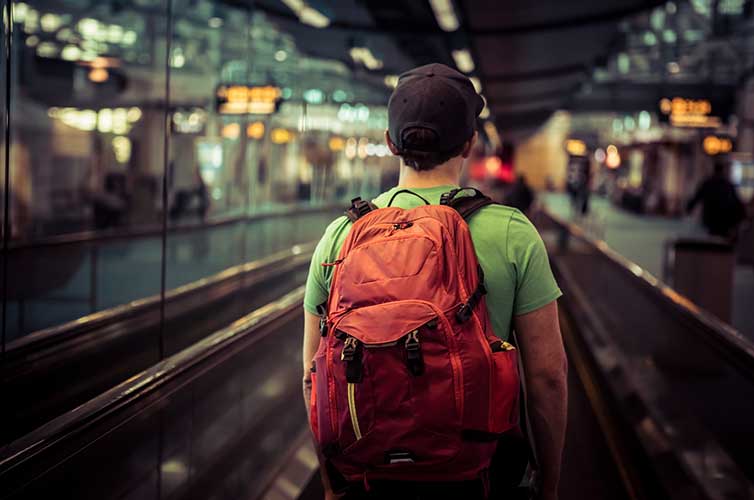
Get there early. Plan to get to the airport at least 2 hours in advance for domestic flights. Leave 3 hours for international flights. Experienced travelers can easily make do with less time, but if you’re new to this, give yourself some extra time to find your way around!
At security: when you get to airport security, all of your bags will need to go through a scanner (and so will you). Place your bags on the belt to go through the scanner. Take any liquids and large electronics (iPads, laptops) out of your bag and put them in a separate tray. Speed things up by having those items easily accessible in your bag. That way you can just grab them quickly and go! You’ll also need to take off your shoes and any heavy coats or sweaters. Make sure your pockets are empty and you don’t have any metal on you (i.e. belts, watches, coins, etc.) when you walk through the metal detectors. Don’t forget to grab all of your things from the trays before leaving security!
Speaking of liquids: you can bring a reusable water bottle through security, but only if it’s empty! Fill it up post-security.
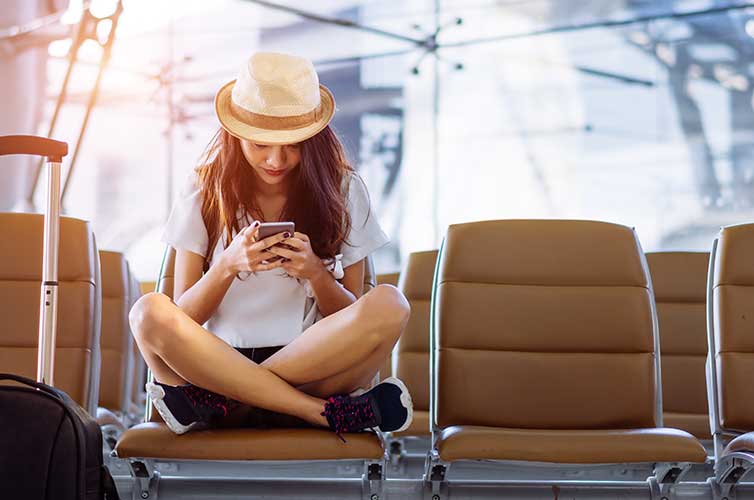
Finding your gate. Your boarding pass will list your gate number on it. If there’s a letter too (i.e. C19), the letter indicates which terminal, the number which gate. Follow the signs to the security check. Once you’re through security, look for overhead signs pointing the way to your gate. Each gate will have a sign displaying the next departing flight, so you can check that you’re in the right place. If your gate changes, the big sign boards with lists of arrivals and departures can help you find the next gate.
Hungry? Airports have plenty of food, but it can be expensive. This is especially true in major airports in big cities, like LAX and EWR. Be prepared by packing your own snacks for your trip! As long as liquids are in containers less than 3.4oz., you can bring food through security with you. Don’t miss that TSA lists some food items as liquids, such as jam or jelly, maple syrup, salad dressing, hummus, salsa, and peanut butter, so make sure to plan your snacks accordingly.
Once you land, then what? Make sure to gather up everything you brought on the plane with you before leaving. Then, just follow the signs to baggage claim. If you have checked baggage, you’ll pick it up here. If not, you can follow further signs to buses, trains and taxis (usually labelled as Ground Transportation on airport signs).
Flight Delays and Problems
If your flight is delayed and you miss a connecting flight: go to a gate agent or call the airline directly to help get you rebooked onto another flight. When the missed connection isn’t your fault (i.e. a mechanical issue with the previous plane caused the delay) and your itinerary is connected (i.e. you didn’t buy separate flights on different airlines), the airline should be able to rebook you automatically.

If your flight gets cancelled in advance: the airline will contact you to let you know. They should also provide alternate options to rebook you. Alternate options don’t work for you? You can call the airline to see what other options the airline has to offer.
If your flight gets cancelled while you’re at the airport:
- First, if you have the airline’s app, look in the app for an auto-rebook option. If there is one, you can follow the steps to automatically rebook yourself on the next available flight.
- If there isn’t an option, call the airline or find an airline representative at a customer service counter. Any gate agent who’s not busy working on boarding another flight can also help you.

If your bags get lost: though thankfully not as common as many people fear, occasionally checked baggage does get lost in transportation. Many “lost” bags are also just delayed, and will likely come in on the next flight. If your bag doesn’t show up when you do, go immediately to the baggage claim office in the airport and file a claim. With your checked bag ticket (you get a small sticker with a barcode for your bag when you check it in), the office employer should be able to locate where your bag is and help you file a claim if needed. With any luck, your bags will be back to you in no time. For more travel tips about lost luggage, check out our article on what to do when your luggage goes missing.
Need more travel tips? Check out our blogs on first-time flying tips, how to find cheap hotels, and everything you need to know about traveling as college student before buying the cheap plane tickets for your next adventure!
